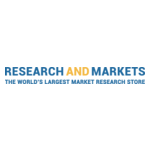DUBLIN–(BUSINESS WIRE)–The “Electric Drive and Power Domain Industry Report, 2022” report has been added to ResearchAndMarkets.com’s offering.
Efficient integration becomes a megatrend, and integration with other domains makes power domains stronger.
Electric drive systems have gone through several development phases from independent module, integration of motor and transmission, and partial integration of ECU, motor and transmission, to three-in-one and X-in-one integration.
In the trend towards `software defined vehicles`, E/E architectures tend to be domain controller centralized and centralized ones. Electric drive systems evolve from conventional `three-in-one integration` at the mechanical level to `X-in-one integration` at the power electronics + `software integration` at the power domain level. Continuous deep FOTA updates favor the better performance of vehicle power systems.
OEMs accelerate mass production of efficient and intelligent electric drive system solutions.
When selecting electric drive solutions, OEMs will consider five factors – power density, integration level, efficiency, safety and intelligence. These factors are of primary importance whether OEMs choose to self-develop or buy from other components manufacturers. In the next stage, new technologies such as X-in-one integrated electric drive, 800V voltage platform, SiC/GaN power devices and power domain will give a big boost to the electric drive system industry.
BYD’s “eight-in-one” electric powertrain: in 2021, BYD introduced an eight-in-one electric powertrain based on e3.0 platform. The high integration of motor, transmission, motor controller, PDU, DC-DC, OBC, VCU and BMS further decreases the space usage and weight of the system. Compared with the previous generation, the solution features 20% higher power density, 15% lighter weight, 20% smaller size, and overall efficiency up to 89%.
As an automaker, BYD builds 400V medium-voltage and 800V high-voltage vehicles on the same platform. The independent boost device and reusable drive system power devices constitute a boost charging topology that enables modular boost architecture. The high-voltage platform adopts 1200V/840A SiC power modules that enable 60% smaller size, 70% lower switching loss, and electric control system efficiency up to 99.7%, relative to IGBT controllers.
Electric Drive System Circuits and Chip Integration on BYD e3.0 Platform
NIO’s second-generation electric drive system: NIO has established the route of front permanent magnet synchronous motor and rear induction asynchronous motor. The maximum power of the permanent magnet synchronous motor and the induction asynchronous motor reaches 180KW and 300KW, respectively. NIO chooses ON Semiconductor’s latest VE-TracT Direct SiC power modules for the front permanent magnet synchronous motor of its second-generation electric drive system.
NIO’s electric drive systems are provided by its subsidiary Shanghai XPT Technology Limited. XPT has made a one-line, multi-site manufacturing layout in Nanjing, Shanghai and Hefei.
Key Topics Covered:
1 Electric Drive System Products and Industry
1.1 Overview of Electric Drive System
1.2 key Components of Electric Drive System
1.3 Development of Key Electric Drive System Technologies
1.4 Electric Drive System Industry Chain Structure and Market
1.5 Summary of Electric Drive System Supply Relationships and Products
2 Power Domain Controller Products and Technologies
2.1 Electric Drive Systems Further Develop from Mechanical and Electronic Integration to Power Domain Solution
2.2 Background of the Birth of Power Domain
2.3 Power Domain Software and Hardware Architecture (1)
2.4 Power Domain Software and Hardware Architecture (2)
2.5 The First Stage of Power Domain Architecture Evolution: Classic Five-Domain Architecture Partition
2.6 The Second Stage of Power Domain Architecture Evolution: Three-Domain Architecture Partition
2.7 The Third Stage of Power Domain Architecture Evolution: Central Control Domain + Zonal Architecture
2.8 Implementation Cases of Power Domain Controlled Architecture: Huawei’s Hyper-converged Power Domain Solution
2.9 Implementation Cases of Power Domain Controlled Architecture: ENOVATE’s VBU
2.10 Implementation Cases of Power Domain Controlled Architecture: NETA Auto’s PDCS
2.11 Summary of Power Domain Controller Products of OEMs and Tier 1 Suppliers (1)
2.12 Summary of Power Domain Controller Products of OEMs and Tier 1 Suppliers (2)
2.13 Eight Development Trends of Huawei’s Hyper-Converged Power Domain (1)
2.14 Eight Development Trends of Huawei’s Hyper-Converged Power Domain (2)
3 Electric Drive Technology Layout of Chinese Automakers
3.1 BYD & FinDreams Powertrain
3.2 Changan Automobile
3.3 Geely
3.4 Great Wall Motor
3.5 GAC
3.6 SAIC & Shanghai Automobile Gear Works
3.7 Dongfeng Motor & Intelligent Power System Co., Ltd.
3.8 NIO & Shanghai XPT Technology (XPT)
3.9 Xpeng Motors
3.10 Li Auto
3.11 Leapmotor
3.12 NETA Auto
3.13 ENOVATE
4 Electric Drive Technology Layout of Foreign Automakers
4.1 Tesla
4.2 Volkswagen
4.3 Mercedes-Benz
4.4 BMW
4.5 Audi
4.6 Toyota
4.7 GM
4.8 Ford
5 Electric Drive Products and Solutions of Chinese Tier 1 Suppliers
5.1 Huawei
5.2 Inovance Technology
5.3 Zhongshan Broad-Ocean Motor & Shanghai Edrive
5.4 Jee Technology
5.5 Jing-Jin Electric Technologies
5.6 Zhuhai Enpower Electric
5.7 Shanghai Dajun Technologies
5.8 Shinry Technologies
5.9 Founder Motor
5.10 Reach Denso
5.11 CRRC Times Electric
6 Electric Drive Products and Solutions of Foreign Tier 1 Suppliers
6.1 Bosch
6.2 Valeo
6.3 Vitesco Technologies
6.4 BorgWarner
6.5 Nidec
6.6 ZF
6.7 Schaeffler
6.8 UAES
6.9 GKN
6.10 Magna
For more information about this report visit https://www.researchandmarkets.com/r/bs03um
Contacts
ResearchAndMarkets.com
Laura Wood, Senior Press Manager
[email protected] For E.S.T Office Hours Call 1-917-300-0470
For U.S./ CAN Toll Free Call 1-800-526-8630
For GMT Office Hours Call +353-1-416-8900







